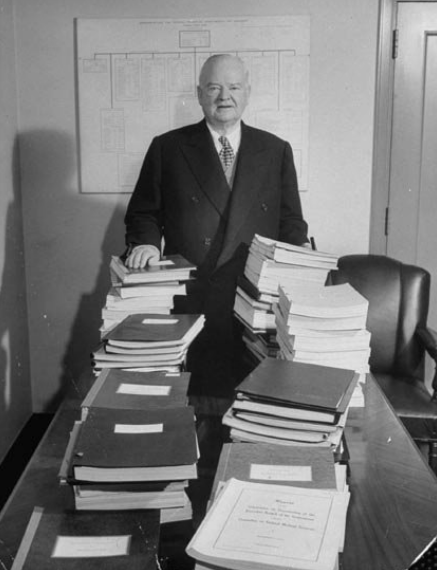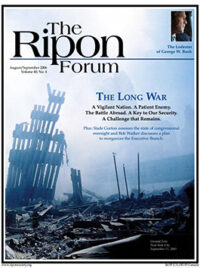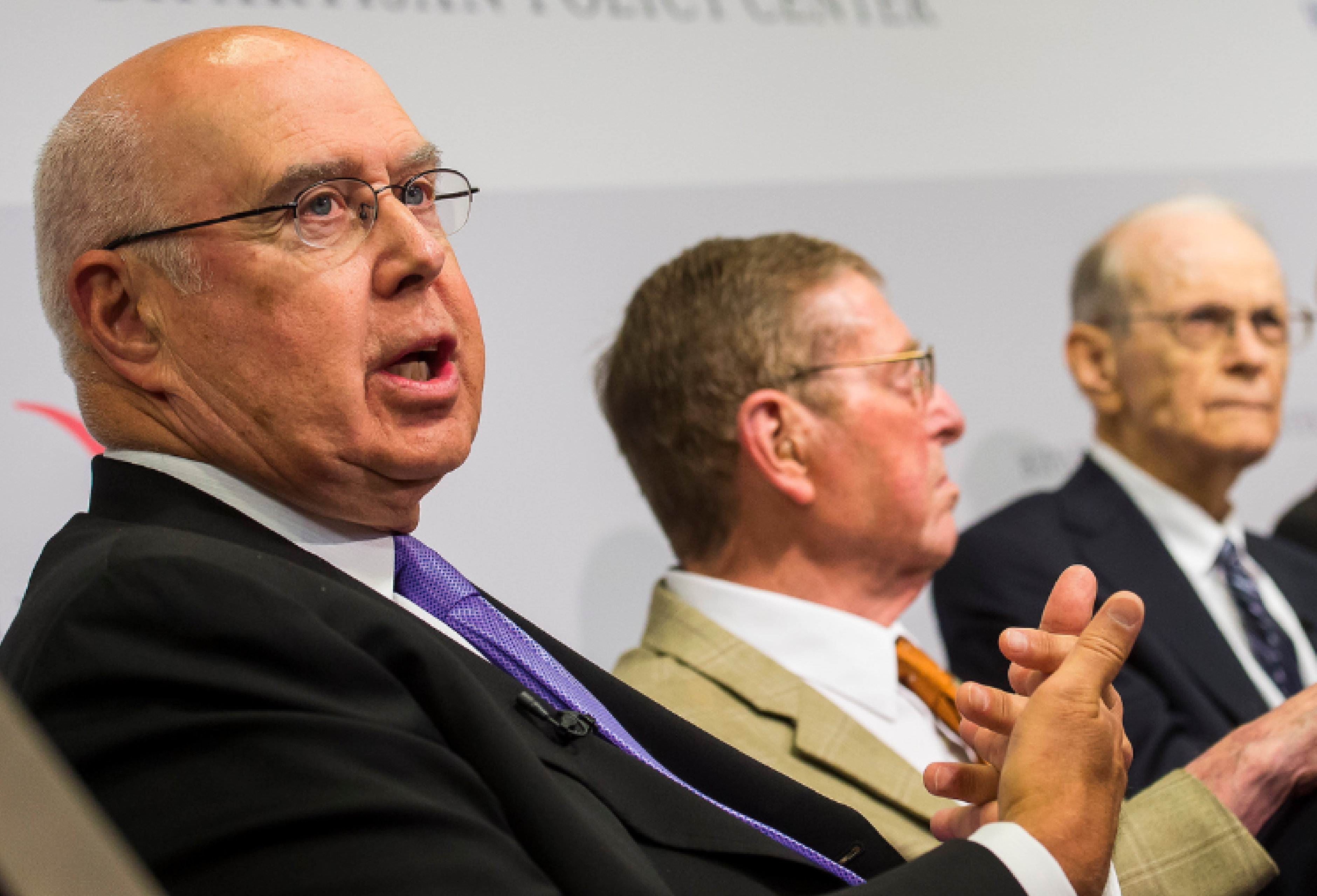
This past June, Google announced that it was establishing a federal search engine to help people find government material on the Internet.
In developing this search engine, Google was recognizing a basic fact of life in the 21st century – mainly, given the size and scope of the federal government today, Americans need help working and navigating across federal agency lines.
But it’s not just Americans in general who need this kind of assistance. Federal workers in particular need this kind of help, as well. Unfortunately, this is a fact too often ignored by Federal managers, who are restrained by a structure and system that was designed to meet the needs of the past century, not the current one.
Indeed, for years, the federal government has been told that horizontal management across traditional agency jurisdictions is the only way the country can deal with complex and seemingly intractable problems. Presidential Commissions as wide ranging as the 9/11 Commission, the Commission on Reforming the Intelligence Community, and the Aerospace Commission, which I headed, have looked at different venues of Federal activity but arrived at a common conclusion – the need for greater cross agency decision-making.
The calls for horizontal management as opposed to the use of vertical single mission stovepipes for strategy and decisions are not surprising. Private industry facing the complexities of management in a world changed by instant information and global product cycles has torn down vertical structures and replaced them with leaner management teams capable of responding quickly to changed circumstances. When government is viewed in the same light, its failure to change is stark and unacceptable.
In some cases, largely under emergency conditions, Congress and the Administration have responded to the calls for government reform with restructuring. The formation of the Department of Homeland Security and the creation of the Office of the Director of National Intelligence are examples. The recommendation of the Aerospace Commission calling for a joint effort between the Department of Transportation, the Defense Department and NASA to plan and implement a new air traffic control system resulted in a Joint Program Office which is working that mission.
The problem is that handling government reform and restructuring one issue or one emergency at a time is micro-managing an issue which needs macro-management thinking. Too often the restructuring done in emergency situations is thrown together without much thought beyond the current crisis. Consider, for instance, the proposals for taking the Federal Emergency Management Agency (FEMA) back out of the Department of Homeland Security just after the Hurricane Katrina mess. Whether it was right or wrong to put FEMA into DHS just after 9/11, the notion of going back and rethinking the decision in response to the next crisis is the antithesis of proper decision-making.
What should be done is a total rethink of the structure of the Federal Government. The last time such a task was undertaken was the Hoover Commission work in the post-World War II era. The generation of leaders following World War II recognized that the Federal Government faced new circumstances and challenges that belied government structures dating back to the 19th Century. The Hoover Commission recommendations – many of which were adopted – went to wholesale changes in both the executive and legislative branches of the Federal establishment.
In the 21st Century, the governmental structures of the mid-20th Century are no longer relevant or workable. Back then, vertical integration of bureaucracies made perfect sense. Today, those bureaucracies are locked inside their own definitions of priority and have become intractable cultures. Too often the cultures see other Federal agencies as rivals and seek not to cooperate toward common governmental goals but rather to hold on to agency jurisdiction and predominance no matter what the cost to the common good. In Congress, many of the most bitter battles involve issues of committee jurisdiction.
In a world where every citizen has more access to detailed information than the most senior Federal bureaucrat had just a few years ago, recalcitrant and petrified bureaucracies do not produce answers to problems. Rather, they are problems themselves. In a world of globalized politics and economics, vertically integrated agencies cannot act swiftly or decisively enough to address problems and crisis.
So, we face the question of what to do. The macro-political answer is to institute another Hoover-like Commission. A Commission with broad authority appointed by the President and Congress to look at the entire government structure and recommend broad-based reforms and restructuring would be ideal. If instituted and successful in its mission, implementation of the recommendations in the face of entrenched interests would prove challenging, but at least a plan would be in place. And, at some point, the wisdom of having a Federal Government that comports to economic and political reality has to lead to action. But until we get to Hoover-like recommendations and implementation, the Administration could take meaningful steps that would result in vastly more horizontal decision-making inside of commonly shared jurisdictions.
What should be done is a total rethink of the structure of the Federal Government. The last time such a task was undertaken was the Hoover Commission work in the post-World War II era.
One possible step that the President could take on his own without the approval of Congress would be to create five “Super Secretaries” within his Cabinet. These Super Secretaries would assume a policy coordinating function across multiple departments and agencies and would be presidentially designated from among current Cabinet Officers. For example, there should be a Super Secretary for National Security who would coordinate policy for the Department of Defense, the Department of State, the Director of National Intelligence and such other agencies as the President might include. Other Super Secretaries could encompass Economy and Trade; Justice, Border and Homeland Security; Energy, Environment and Science and Technology; and Human Resources and Transportation.
Several important reforms would result from the Super Secretary restructure. The President would have a manageable number of key advisers who actually run departments but are forced to think more broadly. The Congress would have to respond to the new reality of a restructured policy function in the Executive Branch and make Committee jurisdictional changes of its own. Former interagency battle lines would be rethought in light of broader policy initiatives. Finally, because the Super Secretaries have the ear of the President, new ideas and priorities would flow more authoritatively to the agencies.
Would there be problems implementing such a plan? Sure. Egos would be bruised. Entrenched interests would be challenged. Boldness always has its critics.
But the alternative to doing something bold and controversial that moves the Federal Government into 21st Century reality is to accept the present state of dysfunction.Our most successful Presidents generally ran their administrations with a minimum number of close advisers and a very broad concept of success. Abraham Lincoln, Franklin Roosevelt and Ronald Reagan clearly defined goals that transcended bureaucracies and moved with focused determination toward those goals. The Federal Government as now structured frustrates that kind of leadership. Government disorganization and dysfunction are part and parcel of public disenchantment. And when crises are mismanaged as a result of dysfunctionality, the political consequences are often severe.
In an article commenting on the Super Secretary concept, former presidential adviser James Pinkerton stated that the way the Federal government is currently configured is at the heart of the problem. “If you will,” Pinkerton wrote, “It’s the system, stupid.”
Presidential commissions have said the same thing time and time again. The public knows that the government is not working because they witness the results that impact their lives. No one believes that the present state of the Federal establishment is in sync with the new realities of politics and economics; of information expansion and information security; of global changes and confrontations demanding swift and decisive action.
Just as the Hoover Commission was established 60 years ago to recommend structural changes to the federal government at the end of World War II, so too do we need another presidential commission to make a similar set of recommendations today. But until such a commission is established, we need to look for ways to move us closer toward some of the reforms we know that are needed.
The establishment of Super Secretaries would do just that. It would be but one step toward addressing much bigger needs. But it could be a super one.
Robert S. Walker is Chairman of Wexler & Walker Public Policy Associates. He served as Chairman of the Commission on the Future of the United States Aerospace Industry. From 1977 to 1997, he represented the 16th District of Pennsylvania in the U.S. House of Representatives.





